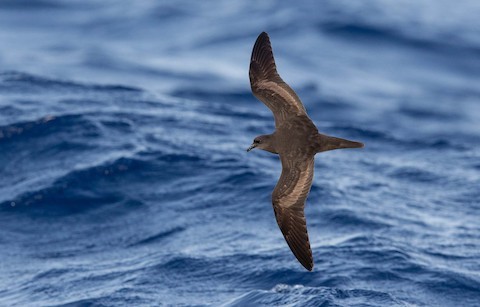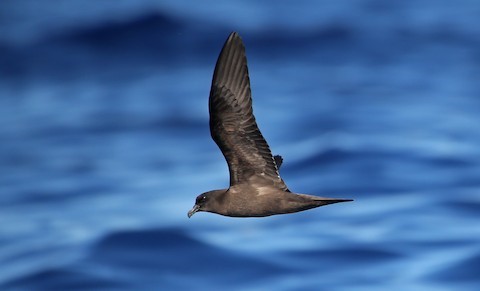Birdfinding.info ⇒ Locally common around some of the islands where it nests, but rarely seen elsewhere. Especially common around Taiwan, where it can be seen near all of the coasts and from the ferry to Matsu Nangan. In Japan it can often be seen from the ferries south of Tokyo to Miyake and Hachijo. In the North Atlantic, it can be found offshore throughout Macaronesia and from ferries between islands in the Azores, Madeira, and Canary Islands. In Hawaii, it can be seen from late April to early October on offshore trips and from many seawatch points (best near dusk): on Kauai at Makahuena Point in Poipu; on Oahu at Makapu’u Point; near Maui at Molokini Islet; and on the Big Island at Keahole Point.
Bulwer’s Petrel
Bulweria bulwerii
Pantropical. Breeds on oceanic islands; otherwise entirely pelagic.
Breeding. Breeds in five regions: (1) Macaronesia; (2) the western North Pacific; (3) Hawaii; (4) central Polynesia; and (5) Mauritius. In most areas mating begins in April or May and chicks fledge around September.
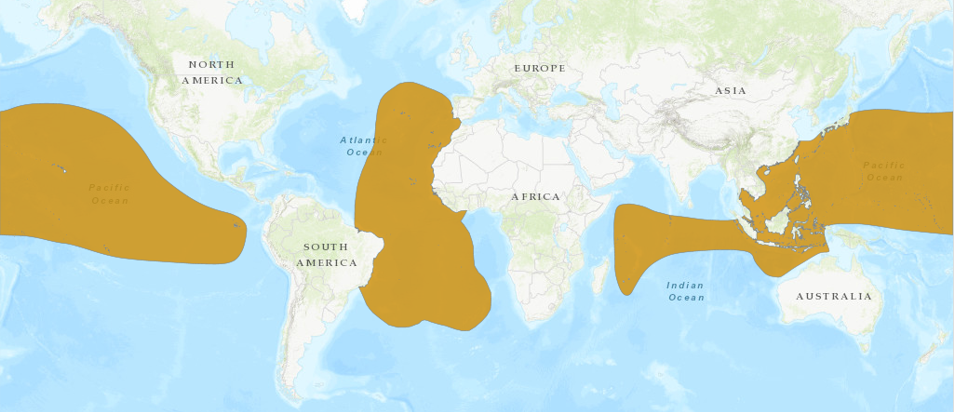
Approximate at-sea distribution of Bulwer’s Petrel. © BirdLife International 2018
In Macaronesia, it breeds in all five archipelagos: Azores (Santa Maria, San Miguel, Graciosa, Pico, and Flores); Madeira (mainly Desertas); Savage Islands; Canary Islands (Lobos, Alegranza, Roque del Oeste, and Montaña Clara); and Cape Verde (Ilhéu de Cima and Raso).
In the western North Pacific, it breeds on islets off of the Fujian coast of southern China, around Taiwan, and south of Japan: especially in the Ogasawara Islands and Nansei Shoto.
In Hawaii, it breeds throughout the Northwest Chain and on several islets adjacent to the main islands. The largest colony (approximately 90,000 pairs) is on Nihoa. Elsewhere in the Northwest Chain, smaller numbers breed on Laysan, Necker, French Frigate Shoals, Lisianski, Pearl and Hermes Reefs, and Gardner Pinnacles. In the 2000s, it began to recolonize Kure and Midway (Eastern Island), decades after being extirpated by rats. In the main islands, known breeding sites include: near Ni’ihau on Kaula and Lehua; near Kauai’s Kilauea Point on Mokuaeae Islet; on islets along the northeastern coast of Oahu; near Molokai on Moku Ho’oniki and islets in Kepuhi Bay; on islets along the south side of Lanai; on Kaho’olawe; near Maui on Moke’ehia, Hulu, and Molokini; and near the Big Island on Ke’a’oi Islet. The largest colonies are about 50 to 150 pairs each on Moke’ehia, Molokini, and Ke’a’oi.
In Polynesia, it is known to breed on the Marquesas Islands and suspected in the Phoenix and Tuamoto archipelagos.
Near Mauritius, it has been suspected of breeding on Round Island since the 1980s. This is the only known breeding site in the Indian Ocean—however, some kind of Bulweria (possibly neither Bulwer’s nor Jouanin’s) is believed to breed in the Comoros Islands.
Movements. Macaronesian populations winter in the tropical South Atlantic. A significant portion of western Pacific breeders—and possibly central Pacific as well—winter in the Indian Ocean.
Wanderers sometimes appear far from the normal range, with scattered records that span most of the world’s tropical and warm-temperate seas. However, there are only a handful of records from either coast of North America (California, Virginia, North Carolina, Florida) the Caribbean (Guadeloupe and Dominica), and South America (a few reports from Brazilian waters, but almost certainly occurs there regularly).
Identification
A small, all-brown petrel with proportionately long wings, and a long, wedge-shaped tail that appears narrow and pointed as it is usually held closed.
Habitually holds its wings pressed forward, bent at the wrist, and often arched or “cupped”—although at times it also flies on straight, flat wings like a shearwater.
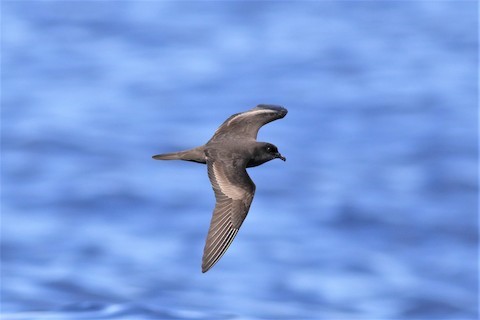
Bulwer’s Petrel, showing characteristic pattern and coloration. (North of Madeira, Portugal; May 9, 2017.) © Peter Flood
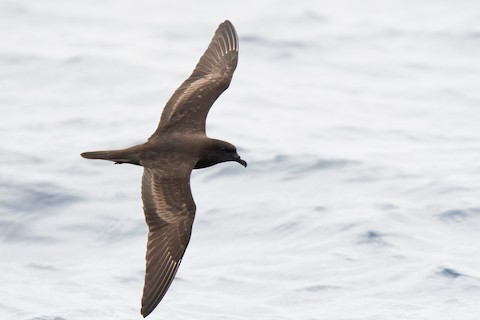
Bulwer’s Petrel, showing characteristic pattern and coloration. (Banco de la Concepción, Canary Islands, Spain; September 2, 2017.) © Miguel Rouco
Flight is usually direct and low over the water, following the contours of the waves.
Sometimes patters its feet in the water like a storm-petrel.
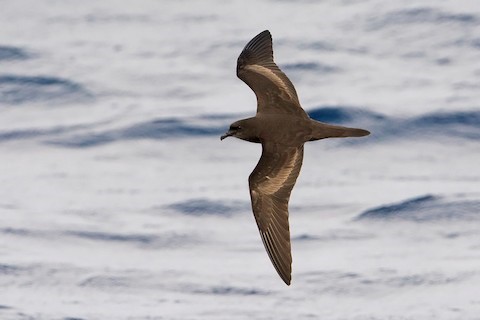
Bulwer’s Petrel, showing characteristic pattern and coloration. (Banco de la Concepción, Canary Islands, Spain; August 17, 2014.) © Miguel Rouco
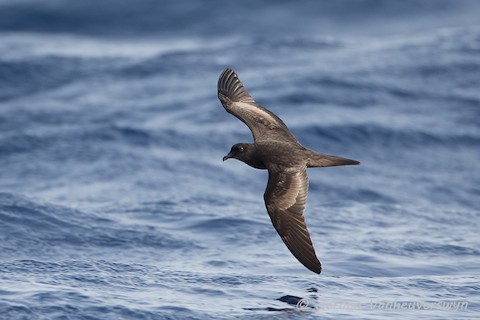
Bulwer’s Petrel. (East of Madeira, Portugal; July 27, 2017.) © Jeroen Vanheuverswyn
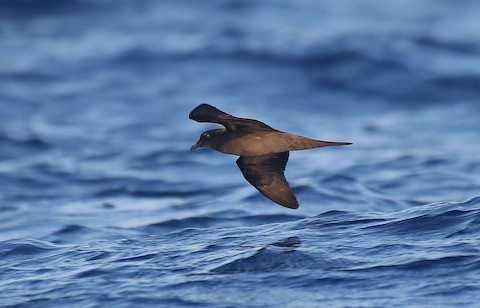
Bulwer’s Petrel, keeping low to the water. (East of Madeira, Portugal; July 3, 2018.) © Paul Chapman
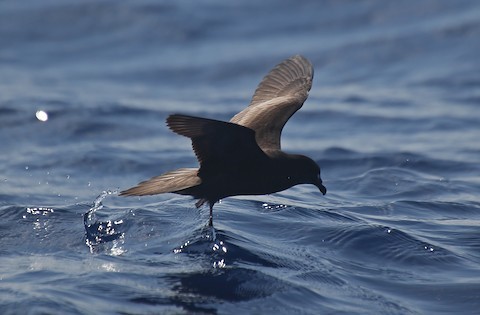
Bulwer’s Petrel, pattering its feet like a storm-petrel. (East of Madeira, Portugal; July 3, 2018.) © Paul Chapman
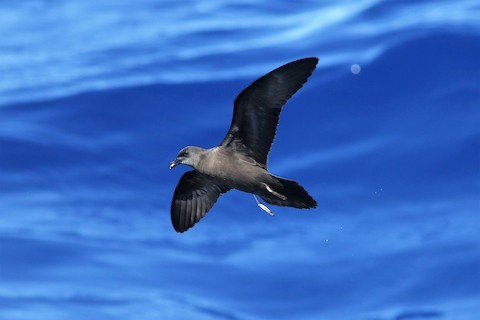
Bulwer’s Petrel, showing wedge-shaped tail. (South of Madeira, Portugal; May 12, 2017.) © Peter Flood
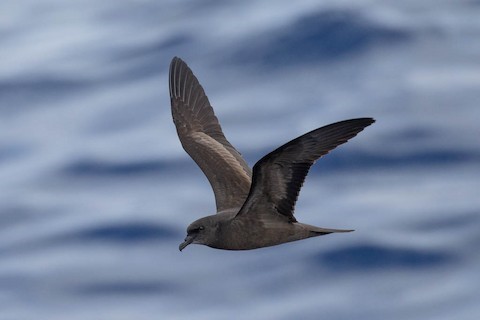
Bulwer’s Petrel, with wings in full upstroke. (South of Madeira, Portugal; May 29, 2019.) © Luis Rodrigues
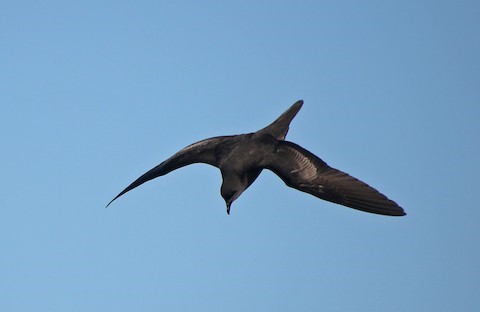
Bulwer’s Petrel, showing arched wing posture. (East of Madeira, Portugal; July 5, 2018.) © Paul Chapman
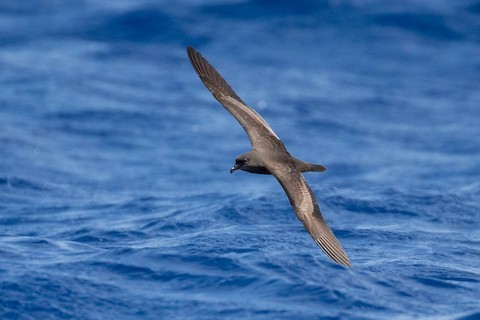
Bulwer’s Petrel, with wings held straight and flat like a shearwater. (South of Madeira, Portugal; May 29, 2019.) © Luis Rodrigues
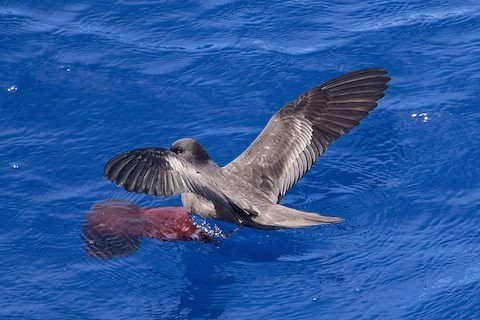
Bulwer’s Petrel, with wings appearing rounded in this posture. (Offshore from western Oahu, Hawaii; April 4, 2018.) © Eric VanderWerf
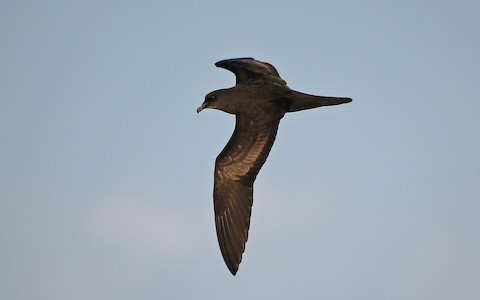
Bulwer’s Petrel. (East of Madeira, Portugal; July 3, 2018.) © Paul Chapman
Details of coloration vary with lighting and molt-stage, but typically appears browner than other petrels and almost always shows a distinct contrasting pale-brown (or blond) stripe above the secondaries—the stripe is usually conspicuous, but less so in freshly molted plumage.
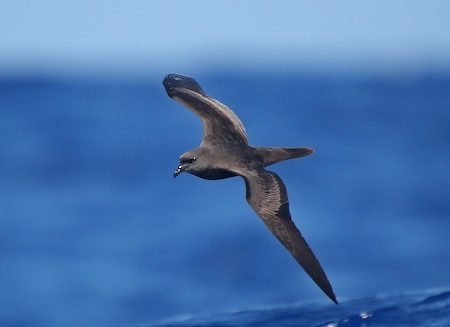
Bulwer’s Petrel. (East of Madeira, Portugal; July 5, 2018.) © Paul Chapman
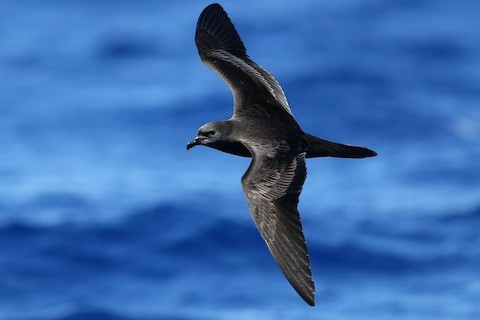
Bulwer’s Petrel, appearing unusually blackish. (South of Madeira, Portugal; May 12, 2017.) © Peter Flood
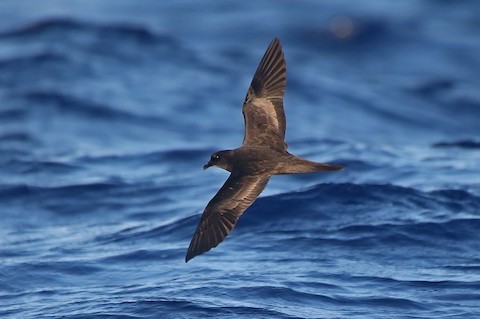
Bulwer’s Petrel, showing contrastingly blond wing-stripes. (East of Madeira, Portugal; July 3, 2018.) © Paul Chapman
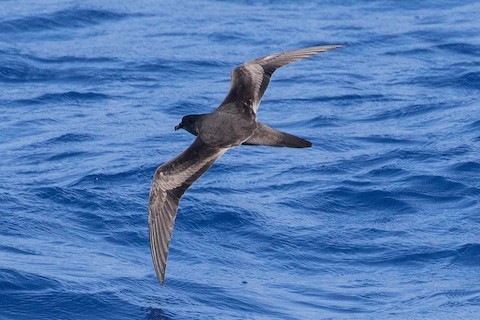
Bulwer’s Petrel, with plumage appearing exceptionally contrasty, blackish-and-grayish. (Offshore from western Oahu, Hawaii; April 4, 2018.) © Eric VanderWerf
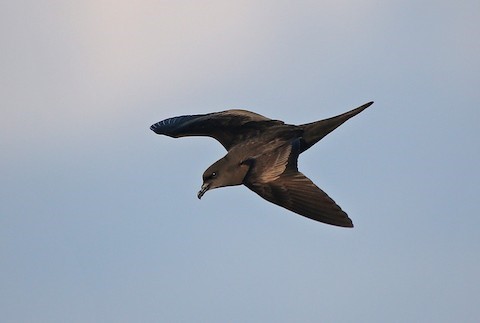
Bulwer’s Petrel. (East of Madeira, Portugal; July 3, 2018.) © Paul Chapman
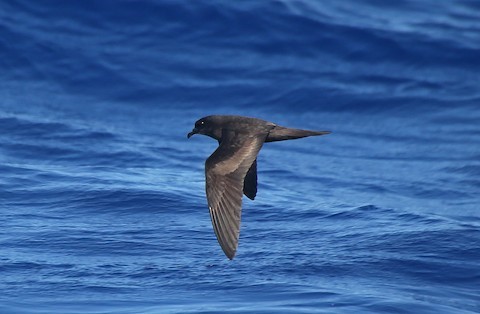
Bulwer’s Petrel. (East of Madeira, Portugal; July 5, 2018.) © Paul Chapman
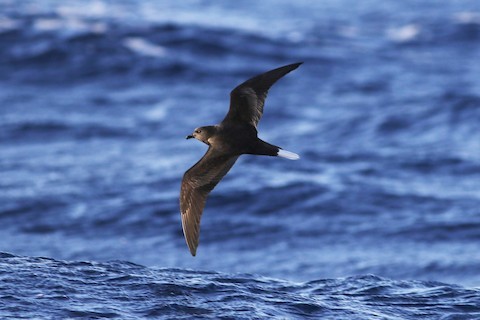
Bulwer’s Petrel, with aberrant white tail. (North of Madeira, Portugal; May 10, 2017.) © Peter Flood
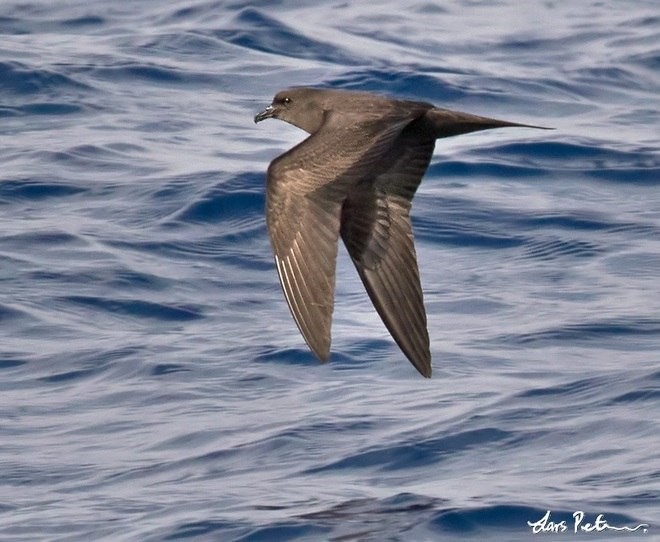
Bulwer’s Petrel. (Offshore from Taitung, Taiwan; May 8, 2017.) © Lars Petersson
The underwings appear uniformly brown or dark in neutral lighting, but can appear pale and shiny under some circumstances.
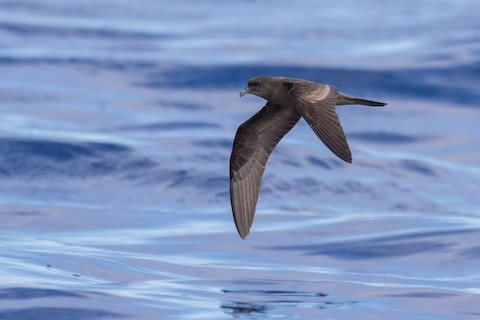
Bulwer’s Petrel. (Offshore from Desertas Islands, Madeira, Portugal; August 2, 2019.) © Tom Bedford
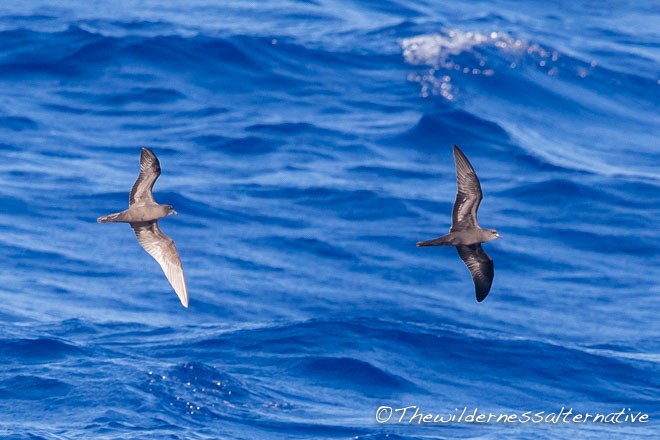
Bulwer’s Petrels, with difference in underwing coloration due to the angle of the light. (Ogasawara Islands, Japan; July 6, 2018.) © Yann Muzika
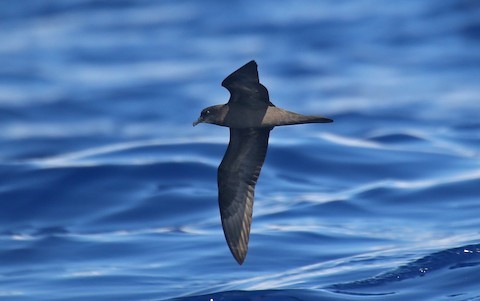
Bulwer’s Petrel, showing typical underwing color. (East of Madeira, Portugal; July 3, 2018.) © Paul Chapman
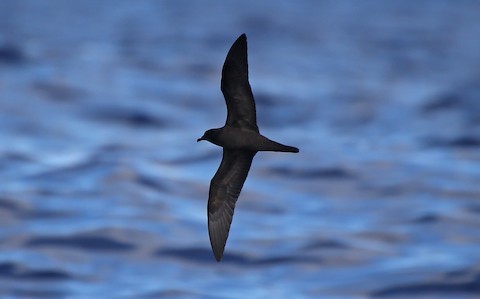
Bulwer’s Petrel, with underwings appearing dark. (East of Madeira, Portugal; July 4, 2018.) © Paul Chapman
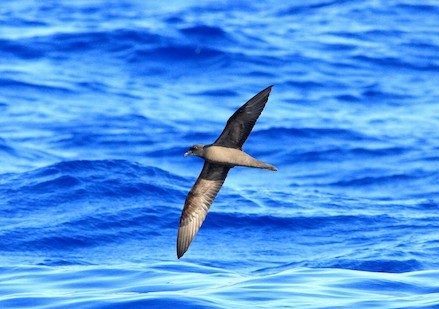
Bulwer’s Petrel, with underwings appearing pale-gray in bright, glary light. (East of Madeira, Portugal; July 4, 2014.) © Anthony Collerton
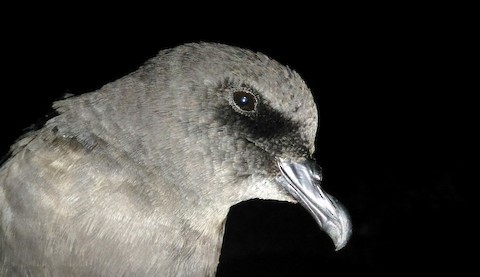
Bulwer’s Petrel, close view of head and bill. (Ilhéu de Baixo, Graciosa, Açores, Portugal; June 16, 2017.) © Rúben Coelho
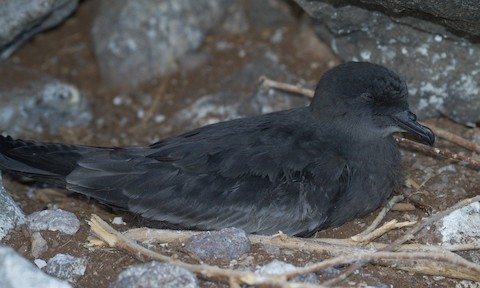
Bulwer’s Petrel. (Nihoa, Hawaii; September 8, 2011.) © Eric VanderWerf
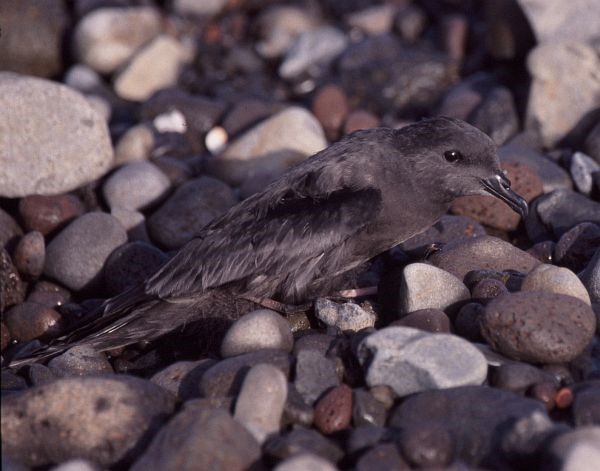
Bulwer’s Petrel. (Madeira, Portugal; September 2003.) © Georges Olioso
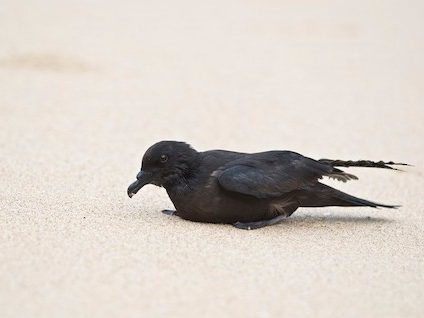
Bulwer’s Petrel, showing blackish legs and feet. (Nangan, Lienchiang, Taiwan; May 29, 2017.) © Chun-Chieh Liao
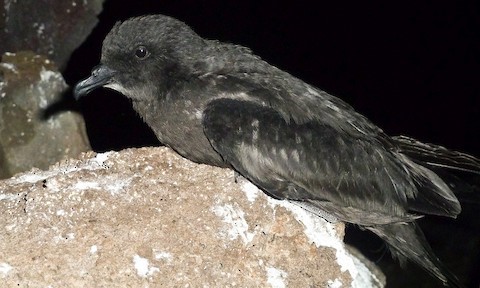
Bulwer’s Petrel. (Nihoa, Hawaii; September 8, 2011.) © Eric VanderWerf
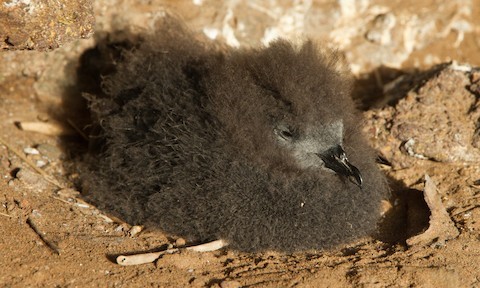
Bulwer’s Petrel, nestling. (Nihoa, Hawaii; September 8, 2011.) © Eric VanderWerf
Cf. Jouanin’s Petrel. Bulwer’s and Jouanin’s Petrels are close relatives that are not known to occur together regularly, but both species have been known to wander widely so they are clearly capable of overlapping. There have been several well-documented records of Jouanin’s Petrel in the Pacific, suggesting that it may breed at some unknown location there, and that the two Bulweria petrels probably occur together regularly.
Bulwer’s and Jouanin’s are very similar in overall shape and coloration, but differ significantly in size—especially the bill. Jouanin’s measures about 15% larger than Bulwer’s but is much bulkier and its bill appears nearly 50% longer and thicker than that of Bulwer’s, giving it a much more imposing countenance.
Bulwer’s usually appears paler-brown overall than Jouanin’s, and has a contrasting pale-brown stripe above the secondaries—usually conspicuous, but much less so in freshly molted plumage. Jouanin’s tends to appear more blackish-brown overall and usually shows little no pale stripe above the secondaries. However, in heavily worn plumage Jouanin’s becomes paler and browner, and a pale stripe often appears above the secondaries.
Cf. Northern Storm-Petrels. Several species of Hydrobatidae storm-petrels share Bulwer’s Petrel’s general color and upperwing pattern. The larger of these (especially Black, Markham’s, Tristram’s, Matsudaira’s, and Swinhoe’s) approach the size of Bulwer’s. Despite the resemblance in plumage, none of the storm-petrels has Bulwer’s long, narrow, pointed tail and mostly direct flight pattern.
Notes
Monotypic species. But Howell and Zufelt (2019) suggest that it may comprise multiple cryptic species.
References
BirdLife International. 2018. Bulweria bulwerii. The IUCN Red List of Threatened Species 2018: e.T22698132A132627626. https://dx.doi.org/10.2305/IUCN.UK.2018-2.RLTS.T22698132A132627626.en. (Accessed July 26, 2020.)
Brazil, M. 2009. Birds of East Asia. Princeton University Press.
eBird. 2020. eBird: An online database of bird distribution and abundance. Cornell Lab of Ornithology, Ithaca, N.Y. http://www.ebird.org. (Accessed July 26, 2020.)
Garcia-del-Rey, E. 2011. Field Guide to the Birds of Macaronesia: Azores, Madeira, Canary Islands, Cape Verde. Lynx Editions, Barcelona.
Garcia-del-Rey, E. 2018. Birds of the Canary Islands. Christopher Helm, London.
Harrison, P. 1983. Seabirds: An Identification Guide. Houghton Mifflin, Boston.
Howell, S.N.G., and K. Zufelt. 2019. Oceanic Birds of the World. Princeton University Press.
Howell, S.N.G. 2012. Petrels, Albatrosses & Storm-Petrels of North America. Princeton University Press.
Kirwan, G.M., A. Levesque, M. Oberle, and C.J. Sharpe. 2019. Birds of the West Indies. Lynx Edicions, Barcelona.
Mullarney, K., L. Svensson, D. Zetterström, and P.J. Grant. 1999. Birds of Europe. Princeton University Press.
Pratt, H.D., P.L. Bruner, and D.G. Berrett. 1987. A Field Guide to the Birds of Hawaii and the Tropical Pacific. Princeton University Press.
Pratt, H.D. 1993. Enjoying Birds in Hawaii: A Birdfinding Guide to the Fiftieth State (Second Edition). Mutual Publishing, Honolulu, Hawaii.
Pyle, R.L., and P. Pyle. 2017. The Birds of the Hawaiian Islands: Occurrence, History, Distribution, and Status. Version 2 (January 1, 2017). http://hbs.bishopmuseum.org/birds/rlp-monograph/. B.P. Bishop Museum, Honolulu, Hawaii.
van Perlo, B. 2009. A Field Guide to the Birds of Brazil. Oxford University Press.
